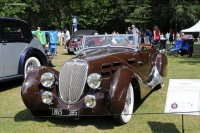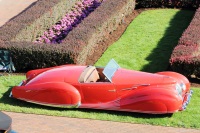Coachwork by Figoni & Falaschi
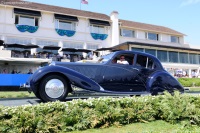
Chassis number: 2MS
Engine number: AK-45
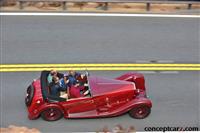
Chassis number: 2311239
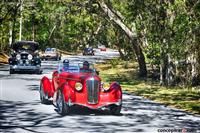
Chassis number: G36-100102
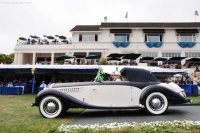
Chassis number: 50607
Engine number: 557
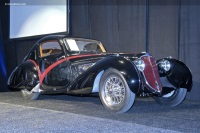
Chassis number: 46809
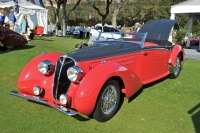
Chassis number: 47532
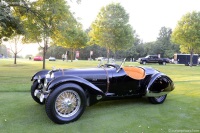
Chassis number: 82928
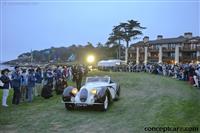
Chassis number: 90111
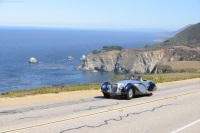
Chassis number: 90115
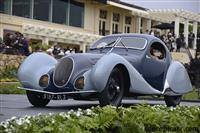
Chassis number: 90105
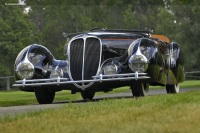
Chassis number: 49169
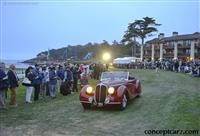
Chassis number: 60158
Engine number: 60158
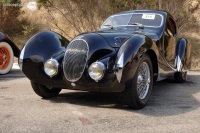
Chassis number: 90109
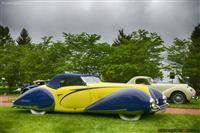
Chassis number: 90019 T1500

Chassis number: 90117
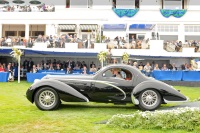
Chassis number: 90034
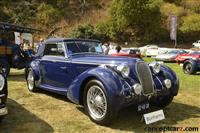
Chassis number: 90039
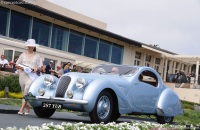
Chassis number: 93064
Engine number: 23294
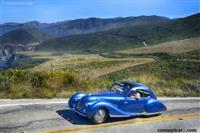
Chassis number: 93043
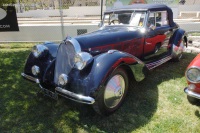
Chassis number: 93001
Engine number: 23152
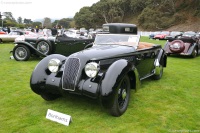
Chassis number: 93123
Engine number: 23356
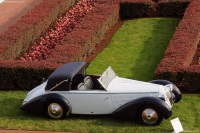
Chassis number: 93122
Engine number: 23343
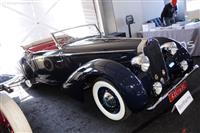
Chassis number: 51740
Engine number: 51740
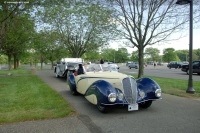
Chassis number: 48667
Engine number: 48667
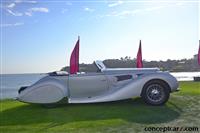
Chassis number: 60173
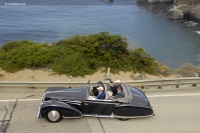
Chassis number: 800701
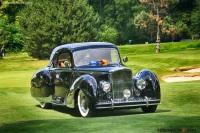
Chassis number: B 9AJ
Engine number: B 65 A
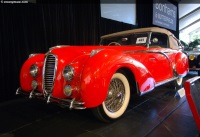
Chassis number: 800954
Engine number: 95200
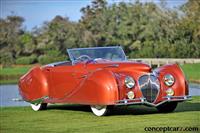
Chassis number: 800495
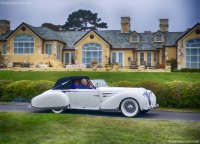
Chassis number: 800998
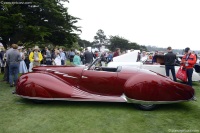
Chassis number: 800580
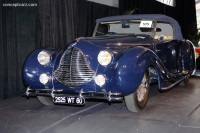
Chassis number: 100047
Giuseppe Figoni was an artist in metal, a three-dimensional talent whose unique flowing coachwork made the automobile a pearl shaped by invisible forces.
The wind was Giuseppe Figoni's enemy. It fought him with drag and swirls that sapped his cars' power. The automobile's Archilles heel was its wheels and tires, interrupting air flow and creating the drag that challenged Figoni. His accomplishment in making enclosure of wheels and tires an important design element foreshadowed the work of his contemporaries and successors by years. Figoni complemented his voluptuous shapes with a creative and original palette.
This automotive sculptor was born in 1894 in Piacenza, in Italy's Emilia region, and emigrated with his family as a boy to Paris where had apprenticed in a classic coach works. It eventually became Carrosserie Automobilie in Boulogne-sur-Seine near Paris's famous Longchamp race course, a mecca for the Parisian carriage trade. Figoni's creativity wasn't limited to sculpting beautiful and efficient coachworks, however. He also created and patented designs for disappearing soft tops and even a disappearing sunroof. Figoni developed a following early on, and what could be more understandable than that Tony Lago, attempting to revivify Talbot, should likewise establish a relationship with him.
In 1935 Figoni acquired a partner, businessman Ovidio Flaschi, who also hailed from Italy, creating Figoni & Falaschi. On a personal basis the creative Figoni meshed well with Falaschi, whose capital and management skills allowed Figoni to concentrate on his designs which became even more creative and stylish after Falschi's arrival. Figoni was an early adopter of the brilliant paint colors and metallic finished being developed n the mid-'30s and understood the value of stunning presentations. He was famous for his cooperation with the couturiers of Paris to create gowns in styles and colors that matched Figoni & Falaschi's cars in shows and concours d'elegance.
Figoni's automobile designs were flamboyant, graceful and gorgeous, carefully sculpted with the eye of an artist with an inherent appreciation for air flow. Like dunes wind-shaped around the obstacles of rocks and structures, the goutte d'eau coupes of Joseph Figoni accepted the influence of wheels, wind shields, engines and passengers, expressing an intrinsic purity and simplicity that was revolutionary and stunningly beautiful to behold.
Along with similar designs from Figoni's Parisian colleague and competitor Marcel Pourtout, the goutte d'eau sprang upon the automotive world in 1935. Its applications were both extravagant show cars and practical applications that improved the efficiency and performance of competition cars like Tony Lago's T150 C.
Only 16 Talbot-Lago T150 C chassis were bodied by Figoni & Falschi in the goutte d'eau coupe style. All shared Figoni's signature teardrop fenders, steeply raked windshield, flush door handles, chrome accents and sloping fastback. Five were subtly notchbacked, known today as the 'Jeancart' style after the buyer of the first example. The remaining 11 were, with one exception, built on the sporting short-chassis T150 C SS and are today known as the Model New York style (Figoni & Falschi's style number 9220.) The first was built for socialite Freddy McEvoy (who acted as the agent for Figoni & Falaschi and Talbot-Lago in several Teardrop sales) and debuted at the New York Auto Show in 1937.
Characterized by a radiator shrouded in a rounded, streamlined shell, and a vertical oval grille, Figoni & Falschi's 'Model New York' coupes are the ultimate expression of the goutte d'eau style. Each is subtly different in concept and details, reflecting the desires of their individual clients and the application for which they were intended.
Delahaye, Delage, Peugeot, Bugatti and even Bentley employed the goutte d'eau style, but it is the few, spectacular and individualistic Talbot-Lago T150 C SS Teardrop coupes of Figoni & Falaschi that have captured the imaginations of collectors, leaving an enduring and unmatched impression of excellent.
The wind was Giuseppe Figoni's enemy. It fought him with drag and swirls that sapped his cars' power. The automobile's Archilles heel was its wheels and tires, interrupting air flow and creating the drag that challenged Figoni. His accomplishment in making enclosure of wheels and tires an important design element foreshadowed the work of his contemporaries and successors by years. Figoni complemented his voluptuous shapes with a creative and original palette.
This automotive sculptor was born in 1894 in Piacenza, in Italy's Emilia region, and emigrated with his family as a boy to Paris where had apprenticed in a classic coach works. It eventually became Carrosserie Automobilie in Boulogne-sur-Seine near Paris's famous Longchamp race course, a mecca for the Parisian carriage trade. Figoni's creativity wasn't limited to sculpting beautiful and efficient coachworks, however. He also created and patented designs for disappearing soft tops and even a disappearing sunroof. Figoni developed a following early on, and what could be more understandable than that Tony Lago, attempting to revivify Talbot, should likewise establish a relationship with him.
In 1935 Figoni acquired a partner, businessman Ovidio Flaschi, who also hailed from Italy, creating Figoni & Falaschi. On a personal basis the creative Figoni meshed well with Falaschi, whose capital and management skills allowed Figoni to concentrate on his designs which became even more creative and stylish after Falschi's arrival. Figoni was an early adopter of the brilliant paint colors and metallic finished being developed n the mid-'30s and understood the value of stunning presentations. He was famous for his cooperation with the couturiers of Paris to create gowns in styles and colors that matched Figoni & Falaschi's cars in shows and concours d'elegance.
Figoni's automobile designs were flamboyant, graceful and gorgeous, carefully sculpted with the eye of an artist with an inherent appreciation for air flow. Like dunes wind-shaped around the obstacles of rocks and structures, the goutte d'eau coupes of Joseph Figoni accepted the influence of wheels, wind shields, engines and passengers, expressing an intrinsic purity and simplicity that was revolutionary and stunningly beautiful to behold.
Along with similar designs from Figoni's Parisian colleague and competitor Marcel Pourtout, the goutte d'eau sprang upon the automotive world in 1935. Its applications were both extravagant show cars and practical applications that improved the efficiency and performance of competition cars like Tony Lago's T150 C.
Only 16 Talbot-Lago T150 C chassis were bodied by Figoni & Falschi in the goutte d'eau coupe style. All shared Figoni's signature teardrop fenders, steeply raked windshield, flush door handles, chrome accents and sloping fastback. Five were subtly notchbacked, known today as the 'Jeancart' style after the buyer of the first example. The remaining 11 were, with one exception, built on the sporting short-chassis T150 C SS and are today known as the Model New York style (Figoni & Falschi's style number 9220.) The first was built for socialite Freddy McEvoy (who acted as the agent for Figoni & Falaschi and Talbot-Lago in several Teardrop sales) and debuted at the New York Auto Show in 1937.
Characterized by a radiator shrouded in a rounded, streamlined shell, and a vertical oval grille, Figoni & Falschi's 'Model New York' coupes are the ultimate expression of the goutte d'eau style. Each is subtly different in concept and details, reflecting the desires of their individual clients and the application for which they were intended.
Delahaye, Delage, Peugeot, Bugatti and even Bentley employed the goutte d'eau style, but it is the few, spectacular and individualistic Talbot-Lago T150 C SS Teardrop coupes of Figoni & Falaschi that have captured the imaginations of collectors, leaving an enduring and unmatched impression of excellent.
Q: What manufacturers did Figoni & Falaschi create coachwork for? A: Figoni & Falaschi created coachwork for (at least) the following manufacturers: Alfa Romeo, Amilcar, Bentley, Delage, Delahaye, Rolls-Royce, Talbot-Lago Q: What body styles did Figoni & Falaschi create? A: Figoni & Falaschi created (at least) the following body styles: Cabriolet, Cabriolet Roadster, Competition Roadster, Coupe, Court Competition Teardrop Coupe, Drophead Cabriolet Coupe, Drophead Coupe, Faux Cabriolet, Four-Seat Cabriolet, Goutte d'Eau Coupe, Grand Sport Roadster, Lago Spéciale Cabriolet, LWB Teardrop Coupe, Milord Cabriolet, Narval Cabriolet, Narval Roadster, New York Teardrop Coupe, Pillarless Berline, Roadster, Speciale Drophead, Teardrop Coupe, Teardrop Roadster, Three-Position Drophead Coupé, Torpedo Grand Sport
